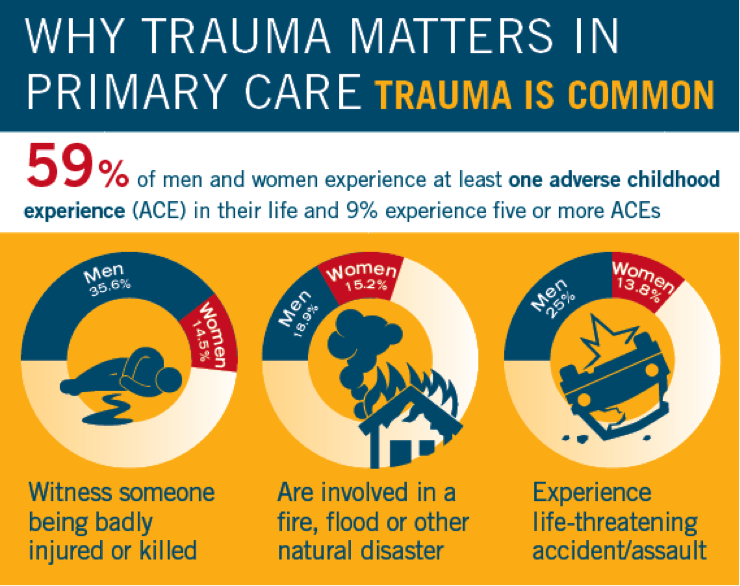Trauma Informed Care
Child trauma occurs more than you think.
More than two thirds of children reported at least 1 traumatic event by age 16. Potentially traumatic events include:
• Psychological, physical, or sexual abuse
• Community or school violence
• Witnessing or experiencing domestic violence
• National disasters or terrorism
• Commercial sexual exploitation
• Sudden or violent loss of a loved one
• Refugee or war experiences
• Military family-related stressors (e.g., deployment, parental loss or injury)
• Physical or sexual assault
• Neglect
• Serious accidents or life-threatening illness
The national average of child abuse and neglect victims in 2013 was 679,000, or 9.1 victims per 1,000 children.
(Source: http://www.samhsa.gov/child-trauma/understanding-child-trauma, Substance Abuse and Mental Health Services Administration)

NEWS UPDATES
TIC Statewide Initiative Progress to Date (November 2015)
Recognize the signs of child traumatic stress with the informative infographic developed by the SAMHSA National Child Traumatic Stress Network (NCSTN).
• Understanding Child Trauma: Child trauma occurs more than you think — 2015 (PDF | 7.2 MB)
• Understanding Child Trauma: There is hope. Recovering from traumatic events — 2015 (PDF | 7.1 MB)
• Understanding Child Trauma: Recognize the signs of traumatic stress — 2015 (PDF | 7.1 MB)
RESOURCES
National Child Traumatic Stress Network
National Council for Behavioral Health
Ohio Department of Mental Health & Addiction Services
Substance Abuse and Mental Health Services Administration
|


